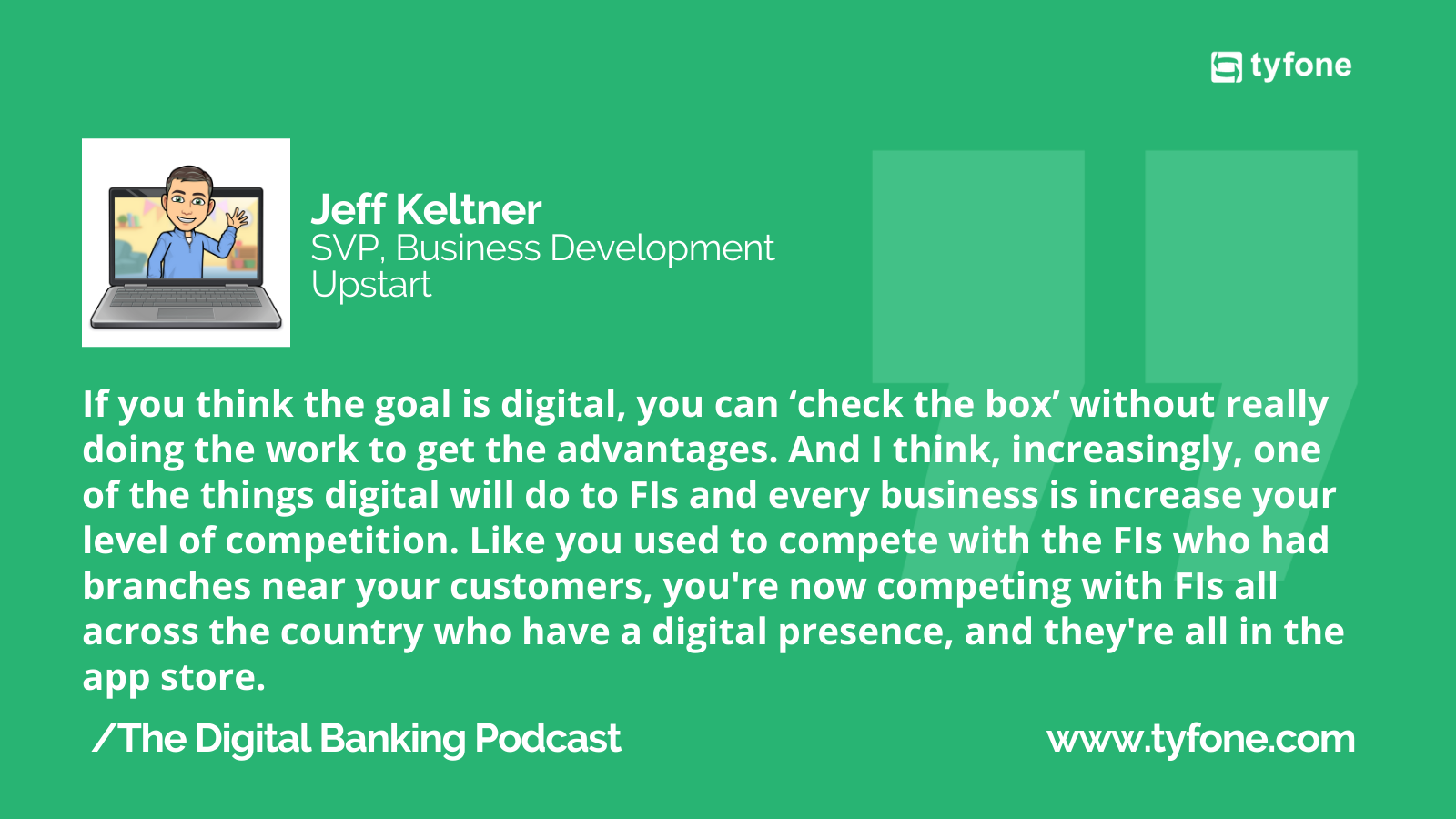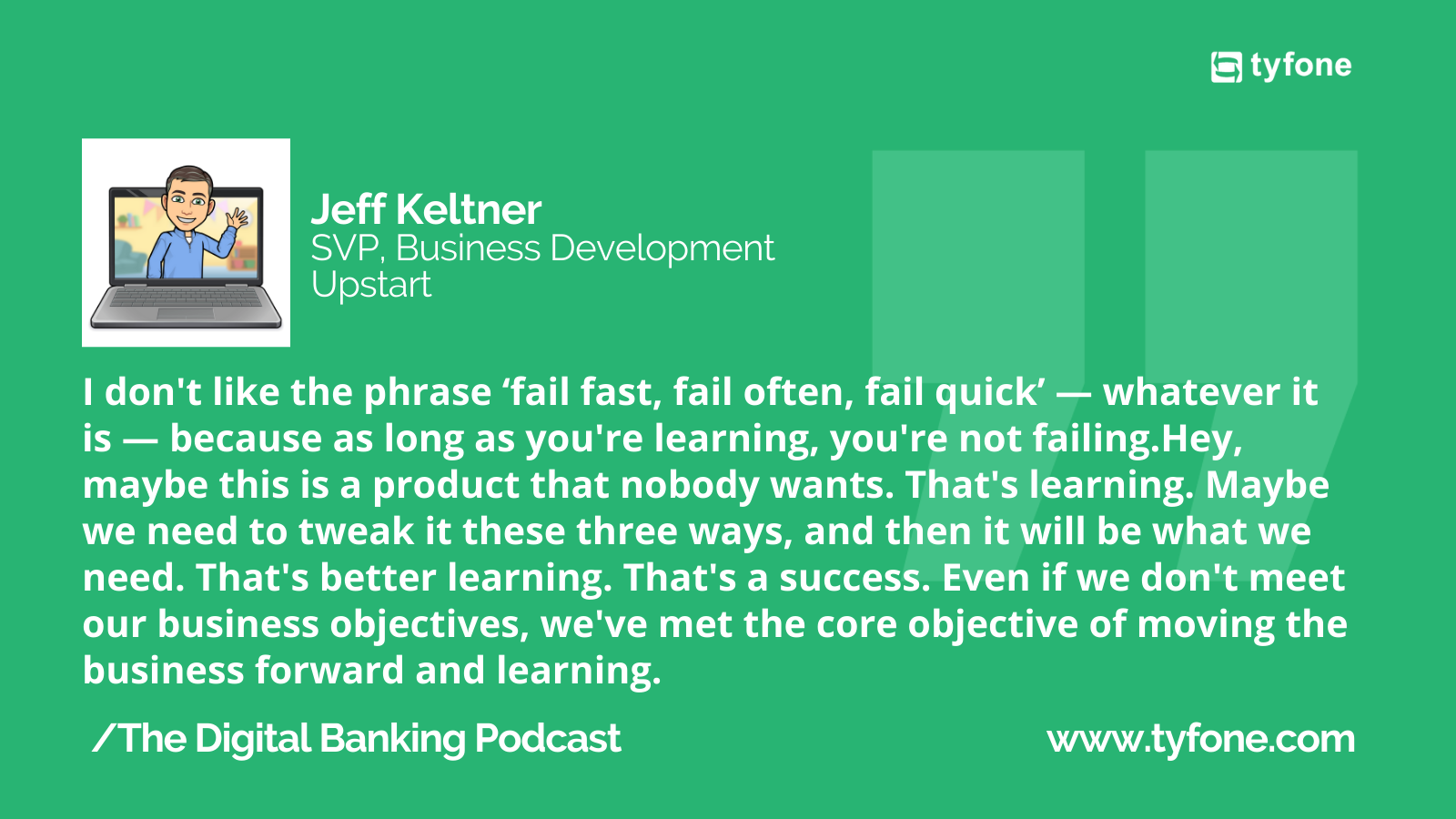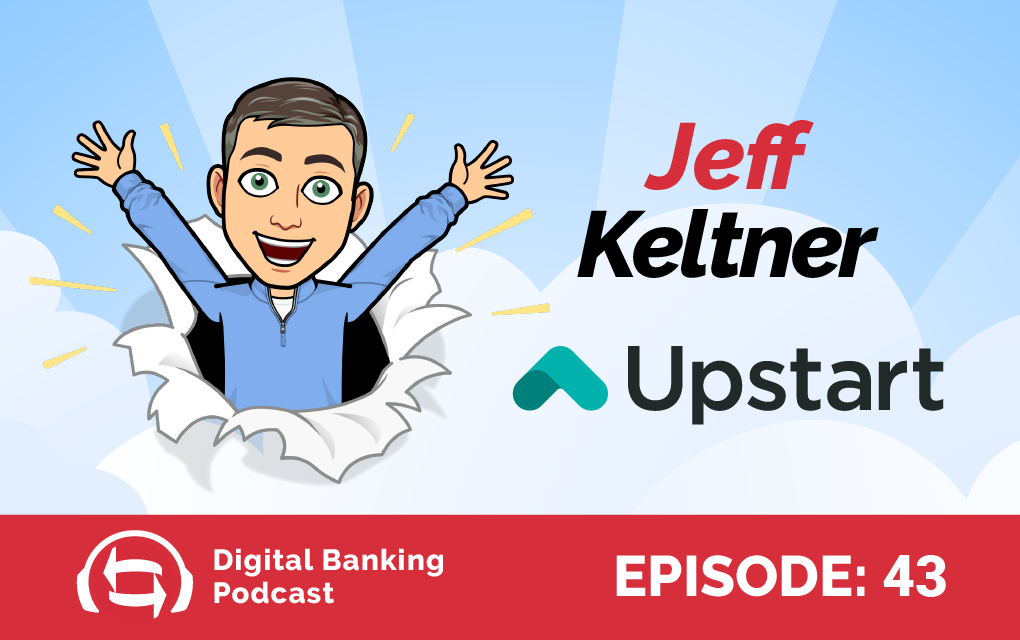Balancing People and Technology to Meet Customer Needs and Stay Relevant
December 22, 2022
- Don’t look at digital transformation as another business objective you must reach. Instead, use it to create new processes and enhance existing ones.
- Don’t run away from mistakes. Embrace failure and learn from it. Sometimes you won’t meet your business objectives, but you will reach learning objectives.
- Aim for a balance between people and technology. Accountholders want to decide when technology is sufficient and when it’s time to talk to a live agent. It’s a mistake to make that decision for them.
In the latest episode of the Digital Banking Podcast, our host Josh DeTar welcomed Jeff Keltner, the Senior Vice President of Business Development at Upstart. The two discussed the digital transformation of the finance space and how community FIs should approach it. They also talked about some keys to success. One is to embrace failure and learn from it. Another involves developing partnerships and achieving the right balance between people and technology.

Digital Transformation Is a Journey, Not a Destination
Every organization is comprised of people, tools, and processes, all perfectly balanced. At least that’s the goal. To be effective, a financial institution’s digital transformation initiative must touch and consider all three in equal measure.
“If you think the goal is digital, you can ‘check the box’ without really doing the work to get the advantages. And I think, increasingly, one of the things digital will do to FIs and every business is increase your level of competition. You used to compete with the FIs who had branches near your customers, you’re now competing with FIs all across the country who have a digital presence, and they’re all in the app store,” explained Keltner.
Be the One Disrupting Your Business
The Netflix business model once relied on shipping DVDs back and forth to its customers. When the company saw how changes in technology were leading to changes in viewer habits, the company pivoted to become the dominant streaming service. This, said Keltner, is a prime example of a company that became its own disruptor.
“I think FIs need to embrace that if somebody is going to disrupt my business because it’s there, I need to be the one [to do it], and I may need to unshackle that new thing from the old thing,” said Keltner. “If you want to be the disruptor to yourself, you’ve got to be willing to unshackle that.”
He continued, “The digital process might be a little different from the branch process. And if you’re trying to shoehorn those things to be identical or to force yourself to make them the same or run on the same technology or whatever, that may not work. And you may end up making your digital product worse in the vein of trying to make it compatible in some way with your branch or your human process.”

Flexing Your Muscles
Depending on the complexity of the project and the sophistication of your IT staff, your institution may not have the resources to develop a given solution in-house. Keltner described this situation in terms of muscles.
“There are two muscles that an institution has to develop to succeed,” he said. “One muscle is how do I find and bring on board a partner? And some don’t know how to do it very well. I think that’s a key muscle. The second is how to manage whether it’s an internally built experience or an externally partnered experience.”
Measuring Success
“How do I know if I’m succeeding? How am I watching metrics about this and determining if it’s working or not, delivering real value to the business and customers? That kind of learning cycle is what software companies, at least modern ones, are built on,’ stated Keltner.’
He added that today’s financial institutions need to operate like technology companies. “I don’t think you have to operate your core systems that way,” added Keltner. “I’m not saying you have to move to the agile methodology for everything, but I think the mindset and approach of measuring, testing, learning, and iterating — that’s critical to develop as a muscle or as an organizational capability to think that way and to evaluate.”
Don’t Fear Failure; It’s a Lesson
Keltner said that Upstart focuses as much on learning objectives as business objectives and there’s always a lot to be learned from failure. To the extent that you can learn something valuable from it, even a failure can be considered a partial success.
“I don’t like the idea of failure because there is such a stigma to it,” said Keltner. “But I love the idea that you’re optimizing your learning and your ability to iterate on learning quickly.”
In addition, if you can distance yourself from your mistakes and look at them with a cool head, you can become faster and better at what you do. “If your learning cycles go from six months to a month to four weeks to two weeks, guess how much smarter you will be a year from now? If you’re on a two-week learning cycle instead of six-month learning, that’s exponential growth — compound interest,” noted Keltner.
This, of course, is not a license to be reckless. The key is to view each failure or misstep as a valuable learning opportunity.






